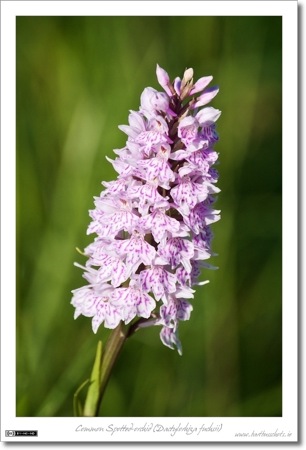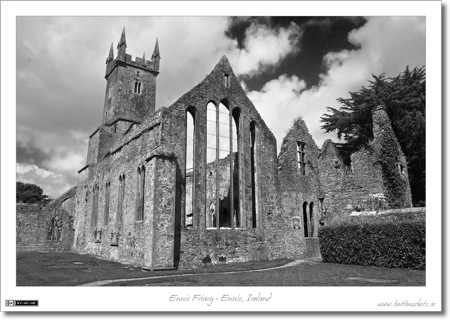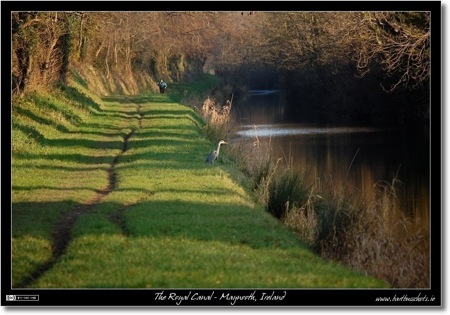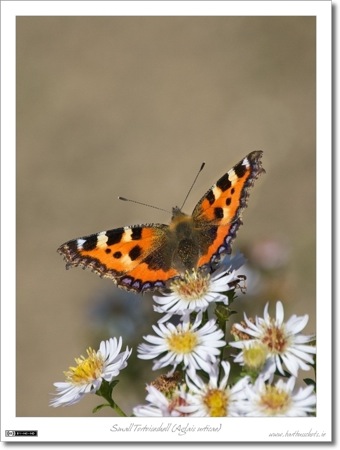Oct
26
Photo of the Week 88 – A Common Spotted Orchid
Filed Under Photography on October 26, 2009 | 2 Comments
A few weeks ago I chose my favourite butterfly shot of the year, this week I’m choosing my favourite wild flower shot of the year. This was a really hard choice because I really got to grips with my Nikkor 55-200mm zoom lens this year, so there were a lot of decent flower shots to choose from. However, in the end, this shot won, in no small part because of how pretty a flower it is! I just love wild Orchids, and always have. When you stumble across one you feel like you’ve found a little treasure! In this case the Orchid is a Common Spotted-orchid (Dactylorhiza fuchsii). I’m not sure the name really suits the flower, ‘common’ implies abundant to me, and that doesn’t seem to tally with reality.
I managed to find a marshy field with quite a few of these beauties near Leixlip Louisa Bridge train station, and after much searching I found one that was blemish-free and standing out on its own enough to get a nice soft un-cluttered bokeh. The light was also pretty much perfect as I shot it in the early evening.
What I really love about this shot is that I had almost noting to do in post – it came out of the camera almost exactly like this! I Just did a few very minor tweaks in Aperture to get the crop just as I wanted it, and to pop the colour and the contrast just a little bit.
- Camera: Nikon D40
- Lens: Nikon DX AFS 55-200mm
- Exposure: 1/640 sec
- Focal Length: 200mm
- Focal Ratio: f/11
- ISO: 400
- Camera Mode: Aperture Priority
- Exposure Bias: -0.3ev
Oct
18
Photo of the Week 87 – Ennis Friary
Filed Under Photography on October 18, 2009 | 1 Comment
I don’t do many black & white conversions, but for some reason Ennis Friary seemed to lend itself to them very well. I guess old church buildings just work in monochrome! This week’s Photo of the Week is one from a set taken on the 1st of August this year when I was in Ennis for a friend’s wedding.
Wide angle lenses cause distortion which makes parallel lines not look parallel, this generally takes away from images of buildings. However, in this image the distortion actually adds to the shot because of the angle of the camera relative to the building. We’re not looking at the building face-on, but instead corner-on. The building is still distorted, but rather than being off-putting the distortion works to make the building look more imposing.
The easiest way to make a colour image black & white is to simply desaturate it. This almost never gives a nice image. The output tends to be bland, flat, and boring. If you want to get a better conversion you need to use a channel mixer. This allows you to control the levels of each colour that are used to create the final monochrome image. You can spend hours tweaking with the mixer, but when it works, it can give very striking images. In this case I used the mixer to take out the blue channel entirely, this turned the blue sky the dramatic black colour you see here. I also turned the green channel down a bit to darken the grass a little. Finally, the red channel was boosted to make up for the reduction in light from reducing both the blue and green channels. This had the effect of brightening the building relative to the grass and sky so it stands out.
- Camera: Nikon D40
- Lens: Nikon DX AFS 18-55mm (D40 kit lens)
- Exposure: 1/1250 sec
- Focal Length: 18mm
- Focal Ratio: f/8
- ISO: 400
- Camera Mode: Aperture Priority
- Exposure Bias: -0.3ev
- Processing: The image was converted to monochrome using the Channel Mixer, and then the contrast in the building was selectively increased using the Dodge & burn plugin in Aperture.
Oct
14
Photo of the Week 86 – The Royal Canal
Filed Under Photography on October 14, 2009 | 2 Comments
A lot my macro shots that make it into this series are shot along the Royal Canal, so this week I thought I’d share a picture of the canal itself! For me it’s a little oasis of accessible nature. I love spending time along towpath with my camera. You meet fellow nature lovers as well as fitness types, and obviously plenty of flora and fauna too.
I love this shot because is captures that combination of nature as well as people enjoying nature. I also love the sense of depth in this shot. I took this shot ages ago, but was reluctant to use it for Photo of the Week because it really only works when you view it large – and I prefer to choose shots that work well even at small sizes. Still – I really like this shot so I decided to share it regardless.
- Camera: Nikon D40
- Lens: Nikon DX AFS 55-200mm
- Exposure: 1/320 sec
- Focal Length: 200mm
- Focal Ratio: f/5.6
- ISO: 400
- Camera Mode: Aperture Priority
- Exposure Bias: -0.7ev
Oct
6
Photo of the Week 85 – Small Tortoiseshell Butterfly
Filed Under Photography on October 6, 2009 | 3 Comments
This is one of my favourite butterfly shots of the year. The season’s pretty much over now, so the changes are this will remain my favourite form the year. For a start, I think the Small Tortoiseshell (Aglais urticae) is one of the nicest species we have in Ireland, but this shot also illustrates why I love my Nikkor 55-200mm F3.5-5.6 zoom lens very well. When you’re shooting flowers or butterflies, you want the subject to be in sharp focus, and the background to be out of focus so that it doesn’t distract from the subject. You don’t want a busy complex background competing for the viewer’s eye. It’s that blurry background that gives shots that pro feel, sometimes called ‘the magazine look’.
This lens allows for a really shallow depth of field right in the sweet spot of the lens (around f8), and gives a wonderfully smooth and creamy bokeh (the out of focus areas). As lenses go, this is a cheap lens, I paid less than €300 for it a few years ago, and it’s come down in price since. A great value lens of you’re a Nikon DX shooter. There’s a new fancy VR (vibration reduction) version of this lens too, but TBH, I think VR is over-kill on this lens. If you can afford it, great, but I certainly don’t miss it. This is my work-horse lens, and I love it to bits.
- Camera: Nikon D40
- Lens: Nikon DX AFS 55-200mm
- Exposure: 1/800 sec
- Focal Length: 200mm
- Focal Ratio: f/11
- ISO: 400
- Camera Mode: Aperture Priority
- Exposure Bias: -0.7ev
- Processing: This shot is pretty much as it came out of the camera. It has been cropped to improve the composition, and subtly tweaked in Aperture’s Dodge & Burn plugin to selectively improve the contrast on the butterfly.










